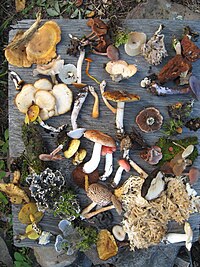
Photo from wikipedia
Simple Summary To better protect and manage the germplasm resources of the topmouth culter (Culter alburnus), it is important to explore the current status of its genetic diversity. In this… Click to show full abstract
Simple Summary To better protect and manage the germplasm resources of the topmouth culter (Culter alburnus), it is important to explore the current status of its genetic diversity. In this study, the mitochondrial DNA COI gene was used to analyze the genetic diversity, genetic differentiation, and historical dynamics of C. alburnus from five river basins in north and south China. The results showed that the genetic diversity is polarized in different populations but without new species differentiation and has significant geographical features, which are important for developing conservation strategies. Abstract To study the genetic diversity of Culter alburnus (C. alburnus) populations, we analyzed the genetic diversity of five C. alburnus populations from Songhua Lake (SH), Huaihe River (HH), Changjiang River (CJ), Taihu Lake (TH), and Gehu Lake (GH) based on mitochondrial COI gene sequences. The results showed that the average contents of bases T, C, A, and G in the 526 bp COI gene sequence were 25.3%, 18.1%, 28.1%, and 28.6%, respectively, which showed AT bias. A total of 115 polymorphic sites were detected in the five populations, and 11 haplotypes (Hap) were defined. The nucleotide diversity (Pi) of the five populations ranged from 0.00053 to 0.01834, and the haplotype diversity (Hd) ranged from 0.280 to 0.746, with the highest genetic diversity in the TH population, followed by the SH population, with lower genetic diversity in the HH, CJ and GH populations. The analysis of the fixation index (Fst) and the genetic distance between populations showed that there was significant genetic differentiation between the SH population and the other populations, and the genetic distances between all of them were far; the genetic diversity within populations was higher than that between populations. Neutral tests, mismatch distributions, and Bayesian skyline plot (BSP) analyses showed that the C. alburnus populations have not experienced population expansion and are relatively stable in historical dynamics.
Journal Title: Biology
Year Published: 2022
Link to full text (if available)
Share on Social Media: Sign Up to like & get
recommendations!